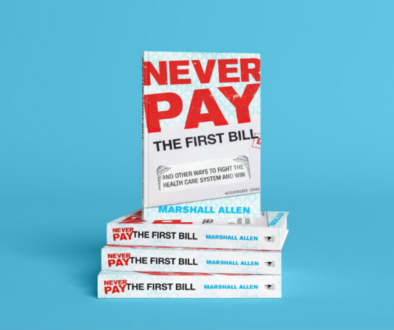Rethink Open Enrollment for Small Businesses As A Cash-Pay Patient!
Three Key Takeaways:
1. Affordable Alternative: Cash-pay healthcare offers a cost-effective option to traditional insurance with transparent pricing and provider choice.
2. Price Transparency: Revealing price differences empowers businesses and employees to lower healthcare costs.
3. Flexible HRAs: HRAs like QSEHRA and ICHRA simplify healthcare costs, offering tax advantages and reducing administrative work.
Are rising healthcare costs weighing on your business? You’re not alone. Every year, small business owners across the country face the dreaded open enrollment season, often bracing for rising costs. This annual cycle can feel never-ending, with few good options for offering employees quality, affordable healthcare. But what if there was an alternative—a way to provide high-quality healthcare without breaking the bank?
Understanding Open Enrollment’s Financial Burden
Open enrollment can feel like a huge ordeal. The process is time-consuming, and despite negotiating with insurers, rates tend to climb year after year. Since 2019, premiums have increased by 24%, and most of these costs fall on employers. As deductibles and co-pays continue to rise, healthcare often feels more like a source of stress than a benefit.
Many employees simply can’t afford the financial burden of high-deductible insurance plans, which can leave them overwhelmed when faced with a serious medical event. Traditional insurance often leads to unpredictable costs, making it hard for employees to budget for healthcare.
Why Transparency in Healthcare Pricing Matters
One major challenge in today’s healthcare landscape is the lack of pricing transparency. Since the price transparency law took effect in 2021, hospitals and insurers are required to disclose prices, including cash-pay rates. This transparency has shed light on the sometimes staggering gap between insurance rates and actual provider costs, revealing that insurance-inflated prices can be 80%-100% higher than cash-pay prices.
This is why cash-pay healthcare is gaining traction. Many providers prefer cash payments as it eliminates the administrative hassle of dealing with insurance companies, making healthcare more straightforward and affordable for patients.
What is Cash-Pay Healthcare, and How Can It Help?
Cash-pay healthcare, particularly when combined with medical cost-sharing, offers a promising alternative to traditional insurance. Here’s how it works:
Predictable Costs – Employees know upfront what they’ll pay. After a small out-of-pocket expense (usually between $1,000 and $1,500), further costs are reimbursed.
Direct Access to Providers – Employees can choose their own providers without worrying about networks or high deductibles.
Supportive Resources – The growing cash-pay sector provides resources that educate and support patients and businesses alike.
No Networks, Same Providers – Employees can visit providers who accept cash-pay, often the same ones they’d see under traditional insurance plans.
Additional benefits include:
No annual price increases or renewals
No annual deductibles, co-insurance, or co-pays
No maximum limits on reimbursements
No rejections due to pre-existing conditions
Cash-pay healthcare can complement traditional insurance or even serve as a full alternative for some employees, offering flexibility and sometimes even zero out-of-pocket costs for certain procedures. Learn more about how to become a cash-pay patient in our blog, 3 Steps To Become a Cash-Pay Patient and Save 50%.
Leveraging Health Reimbursement Arrangements (HRAs)
For businesses interested in a simplified healthcare model, Health Reimbursement Arrangements (HRAs) offer flexible, tax-advantaged ways to support employees’ healthcare costs while remaining fully compliant with the Affordable Care Act (ACA).
Here are two primary HRA types that work well with cash-pay healthcare:
Qualified Small Employer HRA (QSEHRA) – For employers with fewer than 50 full-time employees, QSEHRA lets employers contribute tax-free funds toward employees’ healthcare without requiring group insurance.
Individual Coverage HRA (ICHRA) – Similar to QSEHRA but available to companies of any size, allowing employees to purchase individual policies with pre-tax employer contributions.
Integrating HRAs with cash-pay healthcare can ease the administrative burden of traditional open enrollment, freeing up valuable time to focus on the business.
A Healthier Future for Small Businesses and Their Employees
Embracing cash-pay healthcare alongside, or even instead of, traditional insurance offers a practical solution to rising healthcare costs and system limitations. Educating yourself on cash-pay options doesn’t just reduce expenses—it also makes healthcare more accessible and less stressful for employees, fostering a healthier, happier workplace.
By offering employees access to quality care with the ability to control costs, you’re taking meaningful steps toward a sustainable, people-centered healthcare model.
–
Want to learn more about how cash-pay healthcare can work for your business? Tune into episode 8 of Next-Gen Healthcare podcast, Open Enrollment Season for SMBs: Exploring Alternatives to Traditional Insurance for deeper insights, expert advice, and practical solutions on navigating healthcare costs effectively.




